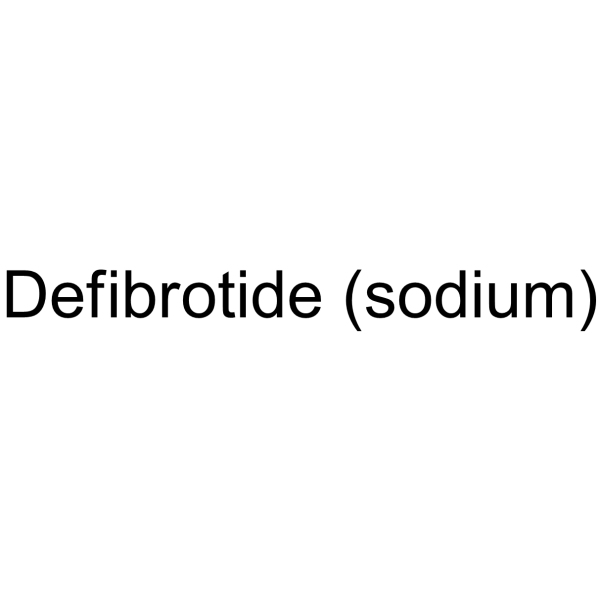Defibrotide sodium
Modify Date: 2024-01-02 18:25:42

Defibrotide sodium structure
|
Common Name | Defibrotide sodium | ||
|---|---|---|---|---|
| CAS Number | 83712-60-1 | Molecular Weight | N/A | |
| Density | N/A | Boiling Point | N/A | |
| Molecular Formula | N/A | Melting Point | N/A | |
| MSDS | N/A | Flash Point | N/A | |
Use of Defibrotide sodiumDefibrotide sodium is a complex mixture of single stranded polydeoxyribonucleotides. Defibrotide sodium has liver protection, anti-inflammatory, antithrombotic, profibrinolytic, and anti-ischemic properties. Defibrotide sodium can be used for sinusoidal obstruction syndrome (SOS)/veno-occlusive disease (VOD) research[1]. |
| Name | defibrotide |
|---|
| Description | Defibrotide sodium is a complex mixture of single stranded polydeoxyribonucleotides. Defibrotide sodium has liver protection, anti-inflammatory, antithrombotic, profibrinolytic, and anti-ischemic properties. Defibrotide sodium can be used for sinusoidal obstruction syndrome (SOS)/veno-occlusive disease (VOD) research[1]. |
|---|---|
| Related Catalog | |
| In Vitro | Defibrotide sodium’s anti-inflammatory effects occur via agonism at adenosine A1 and A2 receptors, which reduces expression of intracellular adhesion molecule-1 and inhibits release of inflammatory mediators[1]. Defibrotide sodium inhibits platelet aggregation by enhancing production of prostaglandins I2 and E2 and stimulates fibrinolysis via increasing tPA activity and inhibiting plasminogen activator inhibitor type 1 activity[1]. Defibrotide sodium also decreases production of tissue factor and increases production of tissue factor pathway inhibitor, resulting in decreased activation of the extrinsic coagulation cascade and fibrin deposition[1]. Defibrotide sodium protects against endothelial cell damage mediated by tumor necrosis factor α and fludarabine-induced activation and apoptosis[1]. |
| In Vivo | Intracarotid (i.c.) administration of Defibrotide sodium (64 mg/kg bolus plus 64 mg/kg/h for 1 h) prior to i.c. thrombin (100 μg/kg) significantly reduces the ability of thrombin to induce cranial thromboembolism in rabbits[2]. Intravenous (i.v.) administration of thrombin (20 μg/kg) in rabbits induces a reversible accumulation of radiolabelled platelets into the thoracic circulation which is significantly reduced by i.v. administration of defibrotide (64 mg/kg bolus plus 64 mg/kg/h for 1 h) prior to i.v. thrombin[2]. Intravenous injection of human thrombin (1250 μg/kg) to mice induces death within the majority of animals which is significantly reduced by pretreatment with defibrotide (150-175 mg/kg, i.v.)[2]. |
| References |
| No Any Chemical & Physical Properties |